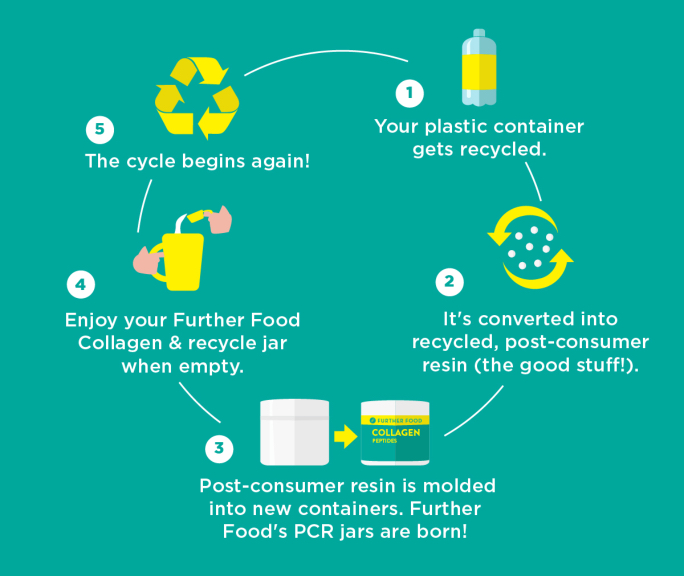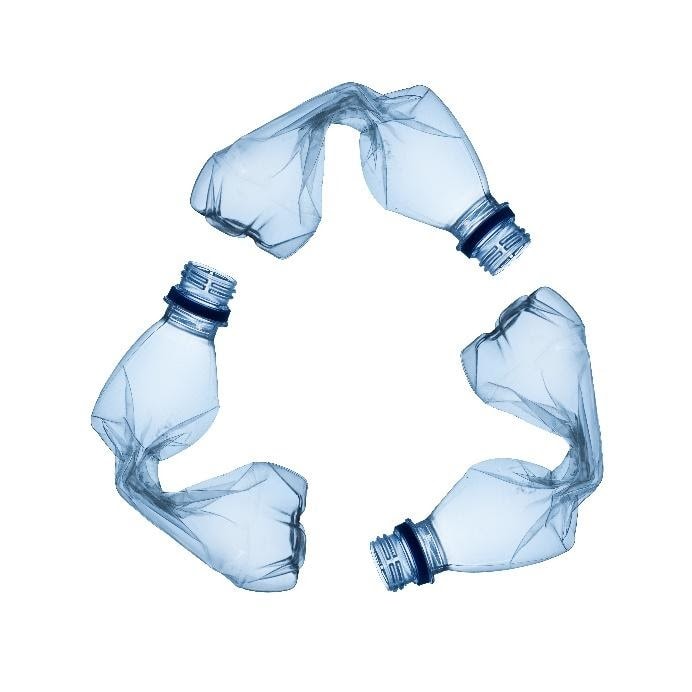Many of the world's leading brands have announced commitments to include more post-consumer resins (PCR) in their packaging in the next 5-10 years. This sentiment has been recognized by companies from all walks of life around the world. Post-consumer resin is a solution to curb the growing problem of plastic pollution and reduce the depletion of natural resources.
In order to meet the growing demand for post-consumer resins, it is critical for consumers to recycle and recycle certain types of used, empty plastic packaging. One of the ways Mauser Packaging Solutions addresses the increasing demand for post-consumer resins and supports the transformation from the linear packaging industry to the circular packaging industry is through our comprehensive life cycle management plan, which includes collection, repair, recycling and manufacturing from PCR Material.
 What is post-consumer resin (PCR)?
What is post-consumer resin (PCR)?
According to the International Organization for Standardization (ISO) "Plastics Glossary" list, post-consumer or post-use materials are defined as "materials produced by the end user of the product that have reached their intended use or can no longer be used. Used (including from Materials returned within the distribution chain).” This is different from post-industrial or pre-consumer materials, which are defined as “materials transferred during the manufacturing process”.
Post-consumer resins (PCR) include consumer packaging items such as plastic films, bottles, milk cans, barrels, and industrial packaging items such as IBC bags and polyethylene barrels. These items can be processed into recycled plastics and used to make new products.
When an IBC or plastic drum reaches its end of life and is no longer suitable for repair, the first step in the recycling process is to collect it through the Mauser Packaging Solutions Collection Program. Then according to the ISO 16103:2005 standard, the empty containers and used plastic parts are sorted, shredded, ground, washed, dried and re-granulated as high-quality post-consumer resins. We call this internally generated PCR "RecoleneTM".
RecoleneTM is our high-quality recycled resin used to make our own components and packaging, such as the Infinity series of products. It has the same advantages of reusability and recyclability as virgin resin and comparable technical performance.
In 2019 alone, Mauser Packaging Solutions produced more than 51,000 metric tons of post-consumer resin from empty IBCs and plastic drums returned through our collection program.
Consumers and companies are increasingly aware of their carbon footprint, which is the amount of carbon dioxide released into the atmosphere due to their activities. Post-consumer plastics enable manufacturers to reduce their carbon footprint.
The carbon footprint of producing 100% post-consumer PET is 60% lower than the carbon footprint of producing virgin PET—this includes the energy required to collect, recycle, and remanufacture plastics. The resulting products are of high quality and can effectively use large amounts of post-consumer plastics.
Post-consumer plastics no longer use virgin plastics, which is especially important when the recycling rate drops. Virgin plastic is made from petroleum, which is a fossil fuel whose supply is dwindling. As it becomes scarce, the cost of raw materials will increase, which will increase the price of plastics.
At the same time, the cost of post-consumer materials will remain the same-the price of collecting, cleaning, sorting and processing recycled plastics will hardly change. In addition, when consumers recycle, supply and demand determine that post-consumer plastics will become very attractive compared to virgin resins.
Microplastics are small plastic pieces of 5 mm to 100 nanometers that enter the environment through dumping or degradation. They enter the oceans, oceans and waterways, where they can be ingested by marine life and accumulate in the food chain. Recycling and reusing plastics can reduce the amount of microplastics in the environment.
Many demographics prefer to deal with green and sustainable companies, and research shows that consumers are willing to pay more for products made with post-consumer plastics. Therefore, the use of post-consumer plastics provides opportunities for companies looking for more sustainable packaging options for their environmentally conscious customer base.
Some people argue that post-consumer plastics are not enough to meet demand, but if customers want and are willing to buy post-consumer plastics, they can create a market.
Although we are close, 100% PCR is still a goal, not the current practice, because for some parts of the packaging, reaching 100% presents unique challenges that no one has really solved before. Part of the reason is the amount of PCR material we can access, and part of the reason is the performance and design of certain parts of the packaging, such as the plastic lid and closure, and the film on our diapers and wipes packaging.
But our packaging engineers are innovating, and we are committed to achieving the 2020 goal.
We hope you agree that in order to create a healthier future for mankind and the planet, PCR materials just make more sense. We invite you to hold us accountable for our progress and join the zero waste revolution. A future with less waste is not just an idea we should hope for-it is a choice we can make.